What do you call a community of walkable neighborhoods with identifiable town centers connected by great streets on an Army installation' At Joint Base Lewis-McChord, Washington, it's called "sustainability."
And it's Joint Base Lewis-McChord's vision for the future - a vision resulting from Fort Lewis's initial sustainability workshop, held in 2002. It was there leaders made a commitment to stakeholders to help ensure a better tomorrow by changing the way they did business. The installation's commitment led to the creation of five planning goals that remain the framework for Joint Base Lewis-McChord's vision of a sustainable community.
"Sustainability isn't just an extra responsibility at JBLM," said Colonel Thomas Brittain, Joint Base garrison commander. "The preservation of resources, the protection of our environment, and the creation of a world-class quality of life for our community are all part of the core mission of a garrison. We take sustainability seriously because we care about our environment and our community, but more importantly, because it's
our job. I'm proud of the way our garrison has embraced that concept here."
Today, Joint Base Lewis-McChord remains true to its commitment despite the challenges of increased training needs, additional maneuver units and rapidly increasing development inside and outside of the installation fence line.
Significant progress has been made since the first workshop. Many sustainable concepts are now ingrained in Joint Base Lewis-McChord business practices, which is why the installation was selected to receive the Secretary of the Army's Environmental Awards Program non-industrial installation award for Sustainability. The award will be presented by Ms. Katherine Hammack, Assistant Secretary of the Army for Installations, Energy and Environment, in April at the Installation Management Command Symposium in San Antonio, Texas.
At the center of Joint Base Lewis-McChord's progress is its Environmental Regulation which includes sustainability and the requirement for an Installation Sustainability Board. In addition, the sustainability program is being infused into the lines of operation of the Health and Resiliency Promotion Board, demonstrating how sustainability can directly affect Soldier well-being.
The Installation Sustainability Program is enabled by operational environmental management system teams and staffed by strategic cross-functional teams. It is overseen by a cross-section of senior leadership. This leadership group, chaired by the Garrison Commander, forms the Installation Sustainability Board, which keeps military and civilian leadership informed of the sustainability program progress and provides a venue for active sustainability planning and decision-making.
With this solid foundation, strongly anchored and supported from many angles, the installation was able to build a shared vision. True to the principles of sustainability, the Joint Base Lewis-McChord program adopted a more holistic design approach that moved beyond facility construction.
The shared planning vision developed by the Sustainable Community Team called for a sustainable community of walkable neighborhoods with identifiable town centers connected by great streets to be created in support of the mission, Soldiers and Families. This breaks with the usual planning model of urban sprawl and looks instead to utilize less land and natural resources; condense the community areas so less infrastructure is needed; and encourage families to become active members of their communities.
To help establish this vision, the team organized focus groups and conducted surveys that included planning and engineering firms as well as nearly 700 stakeholders from across the installation. Building on the planning vision, the final Joint Base Lewis-McChord Master Plan incorporates specific design principles, including enhanced mission capabilities.
The plan helps create a sustainable community by focusing development along proposed transit corridors ensuring that pedestrians and bicyclists are given the same level of attention as automobile movement and creating neighborhood centers that make Joint Base Lewis-McChord more livable. The plan is implemented by regulating plans for individual parcels, rather than typical land-use zoning that tends to encourage sprawl.
The team then developed a new measuring tool, based on the 39 design principles from the Joint Base Lewis-McChord Master Plan, to objectively track progress toward those goals. The neighborhood design checklist assesses if the sustainable design principles are being implemented. The checklist ties into the planning goals, encourages LEED standards, and measures the installationAca,!a,,cs progress toward the ArmyAca,!a,,cs Strategy for the Environment.
The neighborhood checklist describes each design principle with its intent and criteria, and uses metrics that allow the user to assign a numeric score for the design principles under each goal.
Progress toward the planning goals is monitored, measured and communicated. Snapshot charts measure success in achieving environmental management system goals, and the overall vision. They are then used to communicate this progress to the community and key leadership.
The hub of the Master Plan is a new downtown, consisting of mixed-use facilities that contain commercial, residential, and recreational areas. Two companies are collaborating to build this cluster of buildings: The Army Air Force and Exchange Service will build the 600,000 square foot downtown core; Equity Residential is constructing the 256-unit Town Center.
Based on assumptions provided by the U.S. Environmental Protection Agency and Washington Department of Transportation, the town center alone will result in estimated annual transportation costs savings of $1,500 per household, as well as an 18-million-pound reduction in carbon dioxide (CO2) emissions.
Sustainability is about benefits, both short- and long-term -- from cultivating and maintaining community goodwill to identifying better logistical practices for Soldiers and Airmen to take into operational contingencies.
Sustainable practices ranging from waste diversion to energy conservation highlight the importance of saving Army dollars. Sustainability has applications to every installation and Joint Base Lewis-McChord sends this message through its outreach programs, participation in technical conferences and willingness to serve as a research and development demonstration site for technology innovations.
Joint Base Lewis-McChord has been leading the way in sustainability since 2002. The goals already achieved and the goals yet to be reached promise a more sustainable, livable, and mission-capable installation in the coming years. Because of leadership's commitment, the dedication of the Installation Sustainability Program Teams and the support of community members, continued innovation and progress in sustainable development, along with achieving its vision, is assured at Joint Base Lewis-McChord.

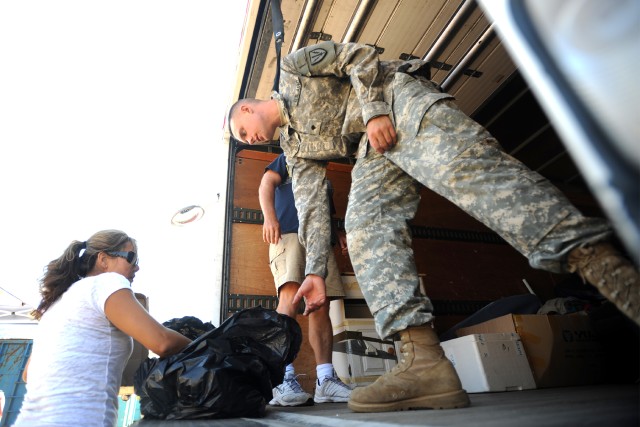
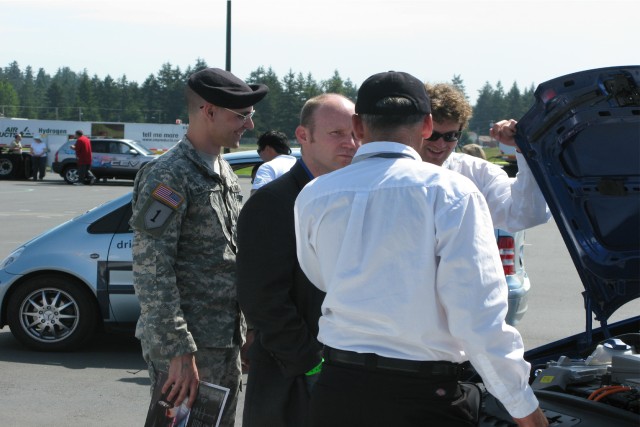

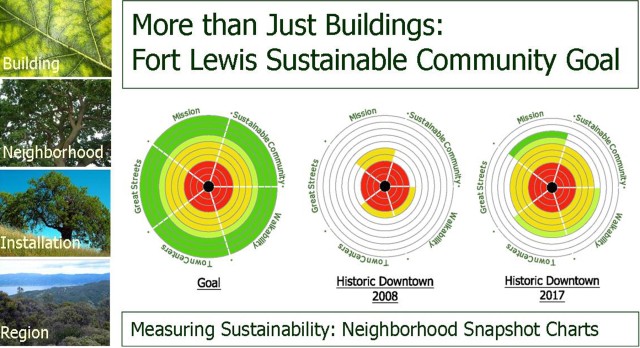

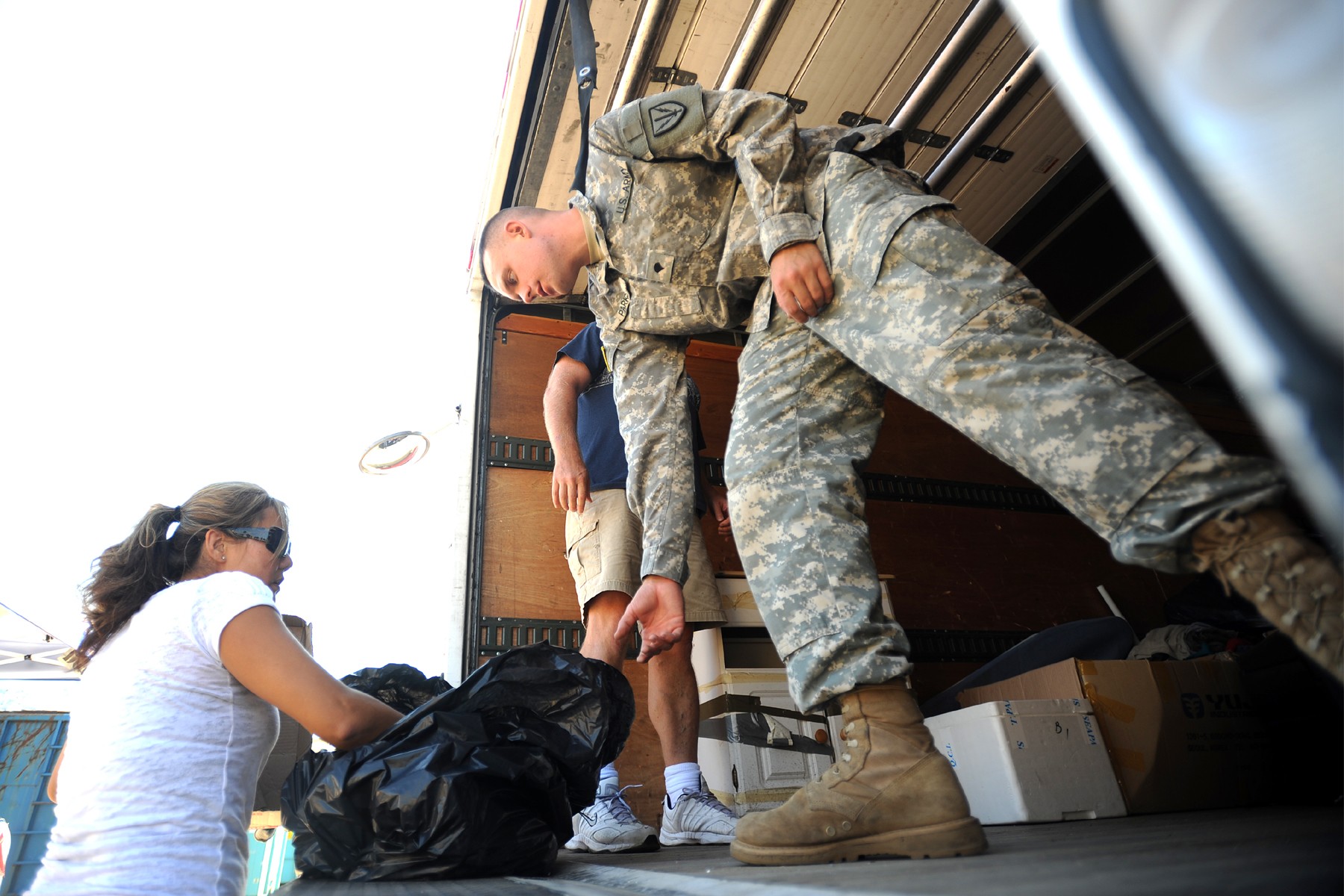
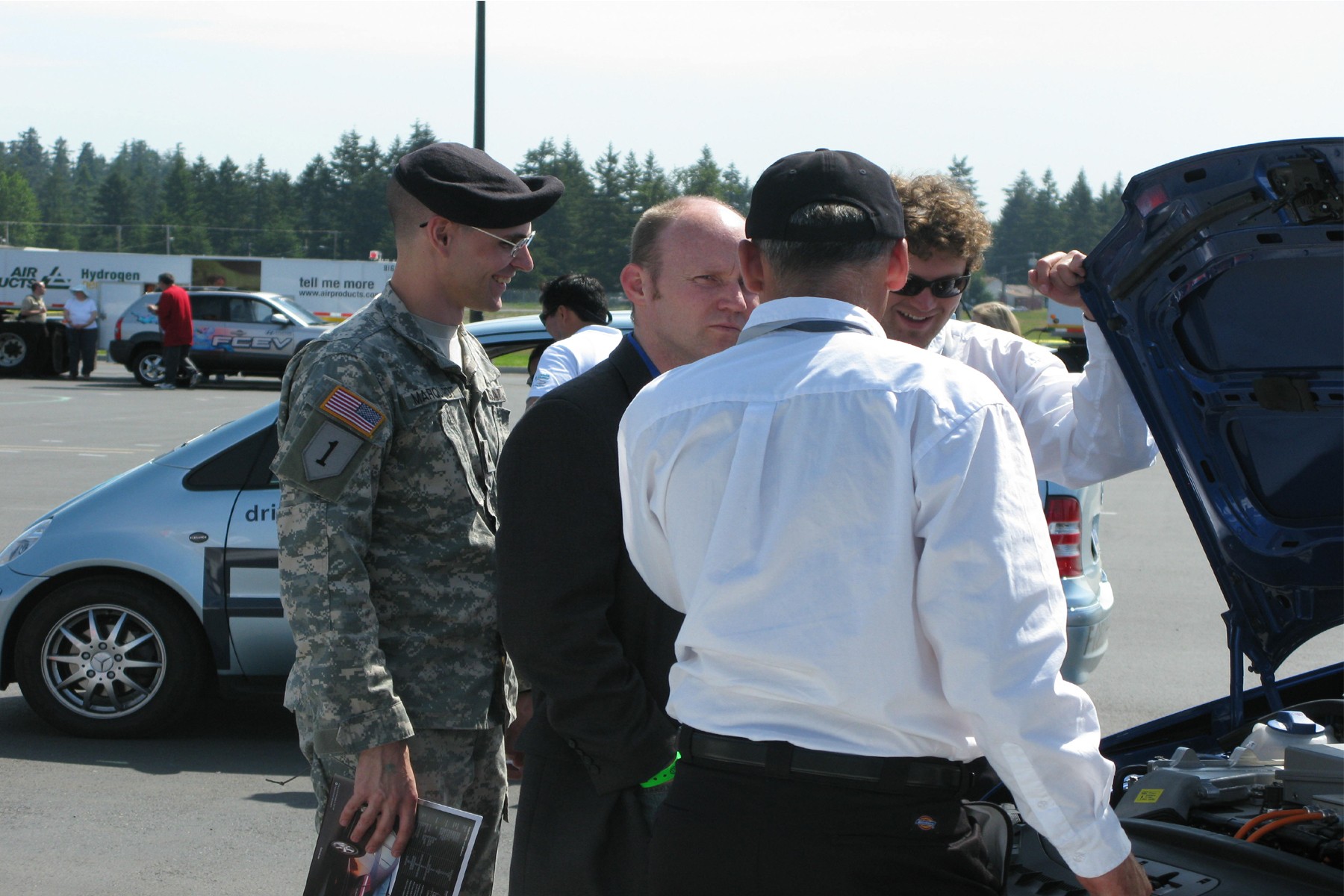

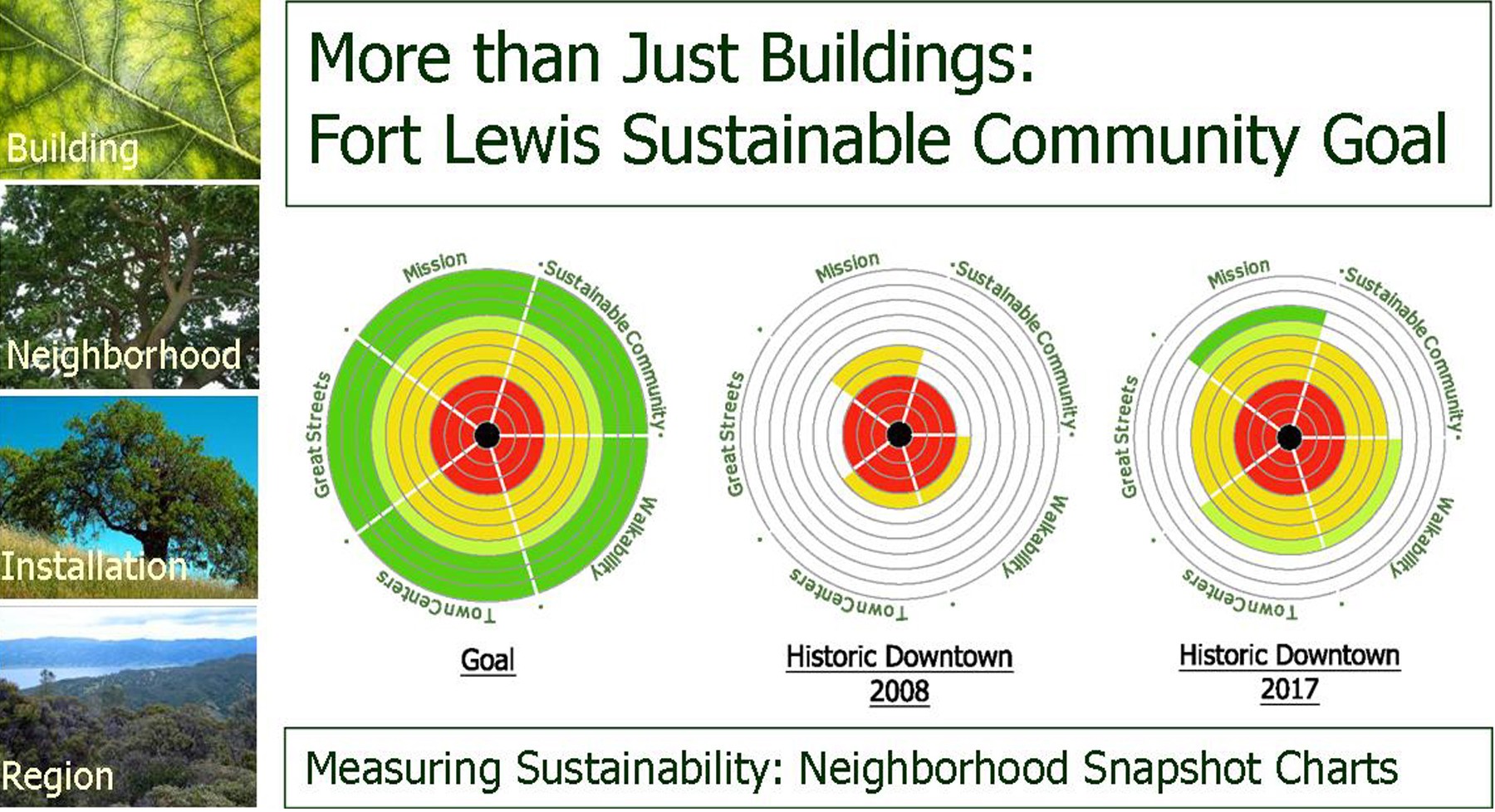
Social Sharing